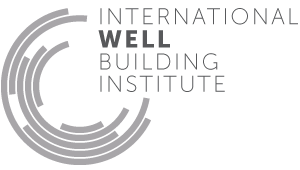The WELL Building Standard® Executive Summary
The WELL Building Standard (WELL) focuses on the people in the building.
Over the last decade, green building standards and standard-setting organizations have made significant strides towards the market transformation of the building industry, resulting in a rapid expansion of green buildings and environmentally conscious building practices throughout the world.
Over the same period, strategies to enhance human health and well-being have played a relatively small role in the evolution of building standards. We believe that the time has come to elevate human health and comfort to the forefront of building practices and reinvent buildings that are not only better for the planet, but also for
people.
- This is the first standard of its kind that focuses solely on the health and wellness of building occupants.
- WELL identifies 100 performance metrics, design strategies, and policies that can be implemented by the owners, designers, engineers, contractors, users and operators of a building.
- WELL is based on a thorough review of the existing research on the effects of spaces on individuals and has been advanced through a thorough scientific and technical review.
- In order to achieve the requirements of the WELL Building Standard, the space must undergo a process that includes an on-site assessment and performance testing by a third party.
A Wellness Standard for Buildings
The WELL Building Standard marries best practices in design and construction with evidence-based health and wellness interventions. It harnesses the built environment as a vehicle to support human health, well-being and comfort. WELL Certified™ spaces and WELL Core and Shell Compliant™ developments can lead to a built environment that helps to improve the nutrition, fitness, mood, sleep, comfort and performance of its occupants. This is achieved in part by implementing strategies, programs and technologies designed to
encourage healthy, more active lifestyles and reducing occupant exposure to harmful chemicals and pollutants.
This document presents the overall strategies, performance targets, certification and adherence steps required for projects to meet the WELL Building Standard.
WELL Building Standard v1 is applicable for commercial and institutional buildings and can be applied to three types of projects:
- New and Existing Buildings, for WELL Certification
- New and Existing Interiors, for WELL Certification
- Core and Shell developments, for WELL Compliance
Future refinements will address the specific requirements of multifamily residences, retail and restaurants, sports facilities and convention centers, schools and healthcare facilities. Projects representing these building sectors are invited to join our ongoing pilot program.
Enhanced Options to the WELL Building Standard
The WELL Building Standard is a dynamic rating system. As the intersection between design and human health evolves, we strongly believe in the importance of advancing alongside. The WELL Building Standard (WELL) v1.0 was launched in October 2014, and as part of the development process, enhanced options to the standard incorporate early user feedback, including simplifications, language enhancements and additional clarifications to certain feature requirements.
The enhanced options fall into four categories: 1) organization of requirements focused on better usability; 2) simplification based on user feedback including additional options to provide more flexibility in achieving the feature requirements; 3) addition of new requirements to the standard to strengthen the system; and 4) clarification, or minor adjustments to improve some of the language.
As part of the enhancements, WELL typologies have been renamed:
- New Construction has been renamed to New and Existing Buildings.
- Tenant Improvement has been renamed to New and Existing Interiors.
- Performance Verification, formerly WELL Commissioning, differentiates WELL from other programs and ensures through on-site testing that the health and wellness requirements in WELL are being delivered.
